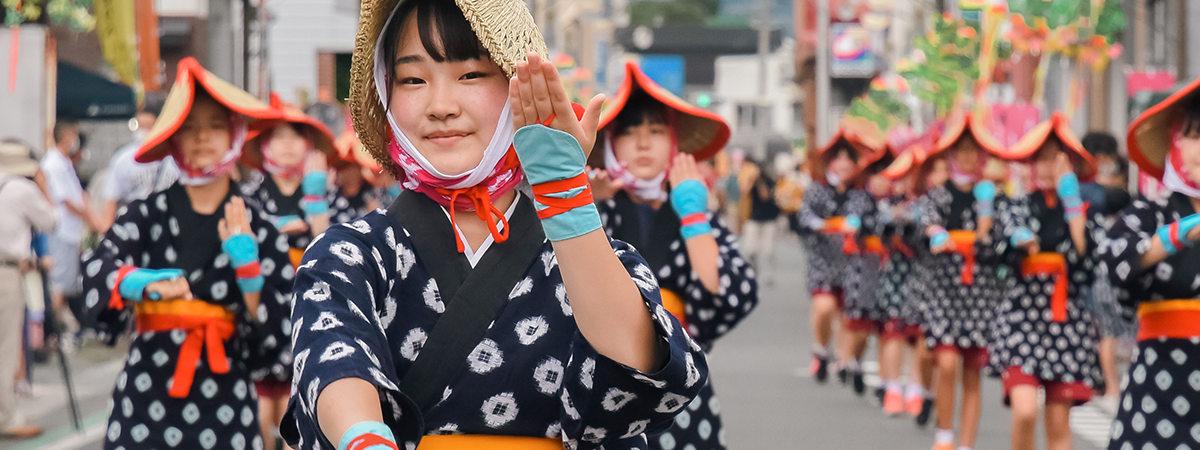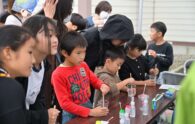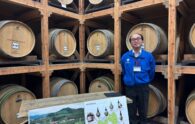What are some of your typical traditions during the summertime? Swimming? Fireworks? Barbeques? Of course, those are a large, exciting part of summer, but we can’t forget about summer festivals!
THE KITAKAMI TIMES has reported on Morioka’s huge Sansa Odori taiko parade before, but there’s also another festival with a long, rich history and tradition in the town next to Morioka – Shizukuishi’s Yoshare Festival. (Yoshare, often called Nanbu Yoshare, is a type of dance that has proliferated throughout Japan, but originated in Shizukuishi)
In this article, I’d like to dig into the Yoshare Festival and share this tradition with you.
First, I’d like to talk a bit about the town of Shizukuishi, which hosts the festival.
Shizukuishi is located about 16km to the west of Morioka, the capital of Iwate Prefecture. It’s a sprawling town, spanning 24 km east-to-west, and 40 km north-to-south, with a total area of 608.82㎢. It’s surrounded by beautiful mountains, like Mount Iwate and Mount Komagatake.
It also has a count of nine different hot springs, each flowing with water with different attributes and effects. Plus, Shizukuishi has plenty of touristy spots, with Koiwai Farm and a couple of ski resorts. You can enjoy the town’s beautiful nature no matter what the season.
In the center of the huge natural wonderful of Shizukuishi Town is the commercial district, called Shizukuishi Yoshare Street. This area has long supported the town’s industry, and it is here, in summertime, where the Shizukuishi Yoshare Festival is held. Every year, the area is filled with many attendees to see the festival, marked with energetic dancers and a colorful parade.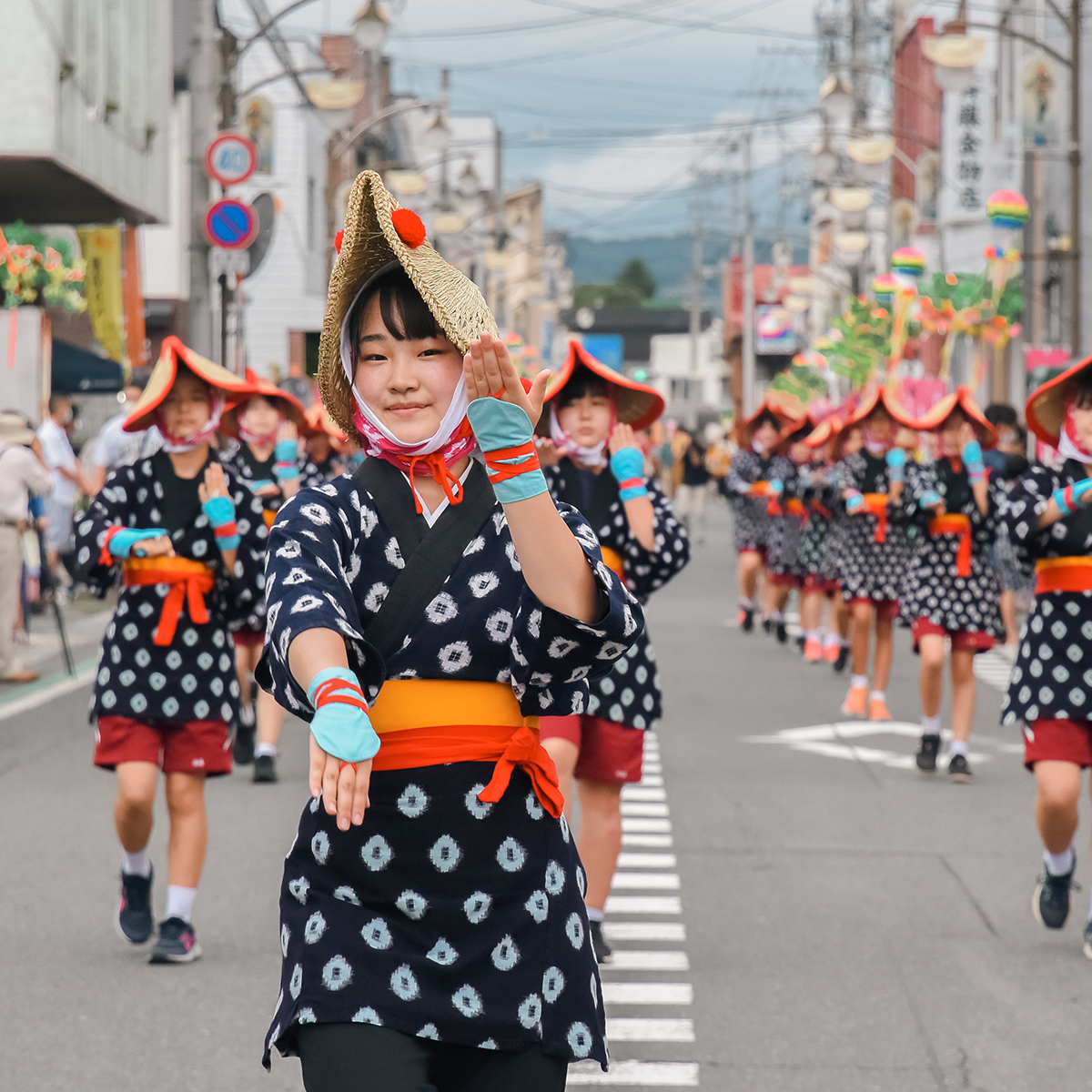
Next, I’ll talk about the festival itself.
This year, the Yoshare Festival marks its 53rd year, and is the largest summer event in Shizukuishi, where the whole town comes together for a single day in a flame of enthusiasm.
On the day of the festival, the Yoshare Street commercial district serves as the main stage, with a procession of traditional floats, and a parade with Nanbu Yoshare and Sansa Odori performers (made up of a number of organizations). At the Alpen Memorial Park near the town hall, there is also a performance of YOSAKOI, a type of frenetic Japanese dance.
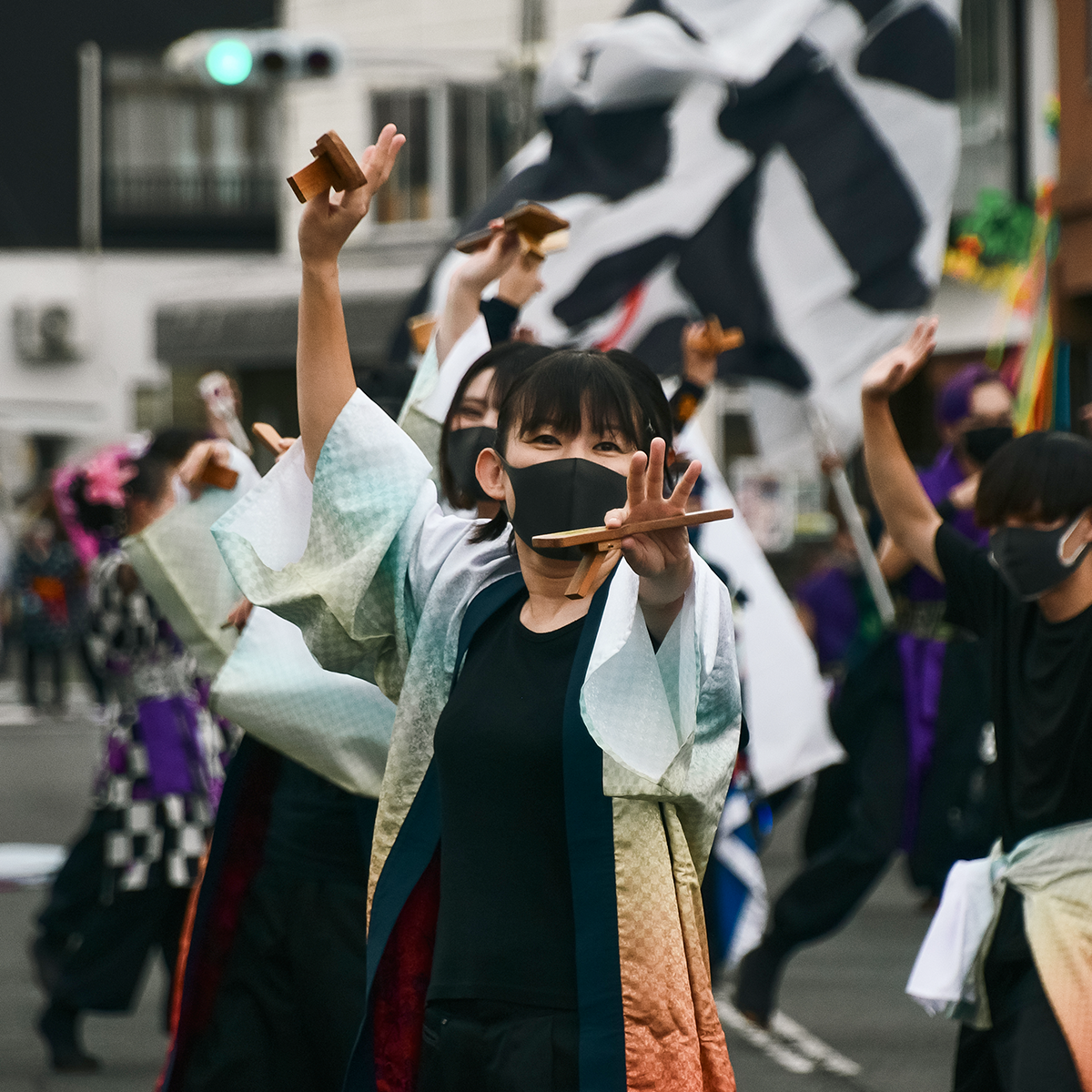
Closing out the ceremony are the Wa Odori – large circles of Sansa Odori dancers gathering throughout Yoshare Street. Of course, anyone who wants to dance is welcome to join in.
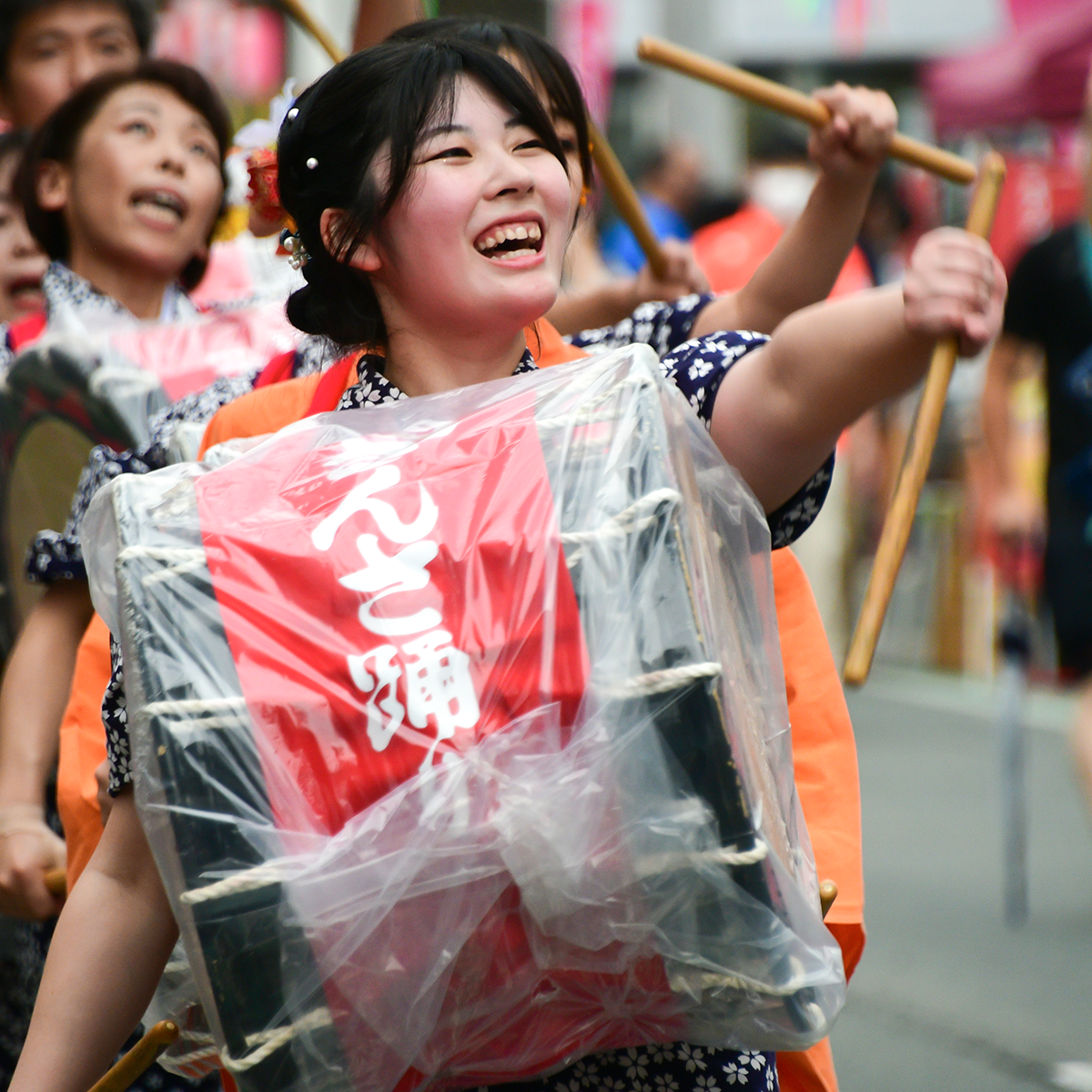
The Yoshare Festival has its origins in 1969. That year marked the 24th National Athletic Meet, hosted in Nagasaki, and hopefuls for the Iwate mountaineering team had their first prefectural competition at the grounds of the Shizukuishi Elementary school. There, the competitors were greeted by people dancing the traditional Yoshare dance of Shizukuishi. Two years later, the first Shizukuishi Yoshare Festival was held in 1971. At the 17th festival in 1987, there were altogether 10,000 people in attendance. Every year, the scale grew bigger, and the festival became a defining tradition of the Shizukuishi summer.
In 2020 and 2021, the spread of COVID-19 meant that the festival had to be unfortunately cancelled, but people kept the event alive in their hearts. In 2022, the Shizukuishi Yoshare Festival was held at a smaller scale for the first time in three years. There were around 500 people in the parade, from Yoshare dancers, Sansa Odori drummers, and other performances. Around 4,500 people were in attendance, and the whole festival area came alive with the colorful uniforms of the performers, and the enthusiasm people had for the parade. The townspeople were so glad to have held the festival again, and even hoped they could restart the Wa Odori again at next year’s festival.
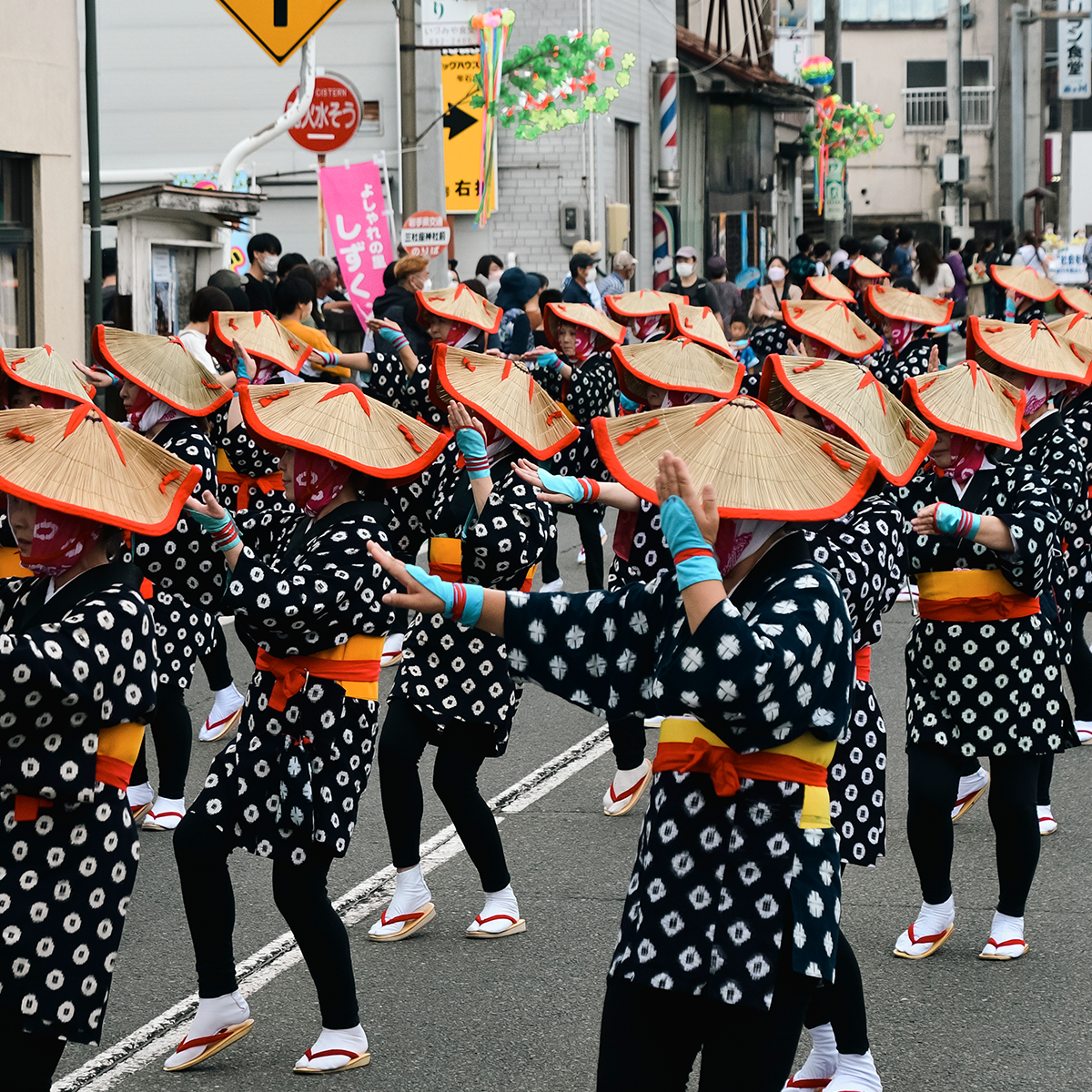
Now I’d like to talk about the Nanbu Yoshare dance itself, which is one of the performances held at the Yoshare festival.
Just as in the above picture, dancers wear a costume called “anekko isho”, which means “a lady’s outfit” in the local dialect. They are adorned with a dark blue cloth robe with white designs, black work pants, a covering on the back of their hand, and a wide-brimmed hat called an amagasa. As the Nanbu Yoshare is performed, one can feel the weight of the history behind the elegant dance.
The dance was originally performed at weddings and other celebratory events. With the National Athletic Meet held in Iwate in 1970, a simplified dance was added so it would be an easier dance for organizations.
So where exactly did the Nanbu Yoshare dance come from?
In order to unlock the mystery behind the Nanbu Yoshare, we have to go back over 400 years into the past, to the beginnings of the original Shizukuishi Yoshare dance.
In ancient times, the master of Shizukuishi Castle was a man named Shiba. He used underground waterways to funnel water to his domain, and to hide the ducts, he built a teahouse manned with a female proprietress who would always keep watch. The Nanbu clan of the neighboring domain sought to attack the castle, and used covert spies to search for these waterways, but they were not able to find them. These spies tried to get information out of the female proprietress by complimenting the sashes on her outfit. However, she found this suspicious, and didn’t give them the time of day.
They say that is the beginning of the Shizukuishi Yoshare. From the end of the Edo period to the Meiji period, the outfits evolved and a high-level dance was developed, and as it was spread throughout the town, it became a uniquely Shizukuishi tradition. From that, the Nanbu Yoshare form of the dance branched off, and spread throughout Japan. That brings us back to today.
In this way, we can see that not only does the Yoshare Festival have a rich story, but the dance performance itself boasts a long history and tradition as a folk performance that represents that town of Shizukuishi.
This year’s Shizukuishi Yoshare Festival will take place on August 11 (Fri, a national holiday). Last year, they restricted the amount of participating organizations, and only the parade on Yoshare Street was held, but this year will mark the first full-fledged festival held in four years. There are three areas for the festival: Shizukuishi Yoshare Street Commercial District, the World Alpen Memorial Park special stage, and the Chuo Public Hall’s Nogiku Hall. They will hold the Yoshare and Sansa Odori parades, have a procession of traditional floats, a YOSAKOI performance, and also hold a song and dance performance by last year’s winner of the Nanbu Yoshare National Competition.
We hope you come to visit Shizukuishi’s shining glory, the Yoshare Festival!
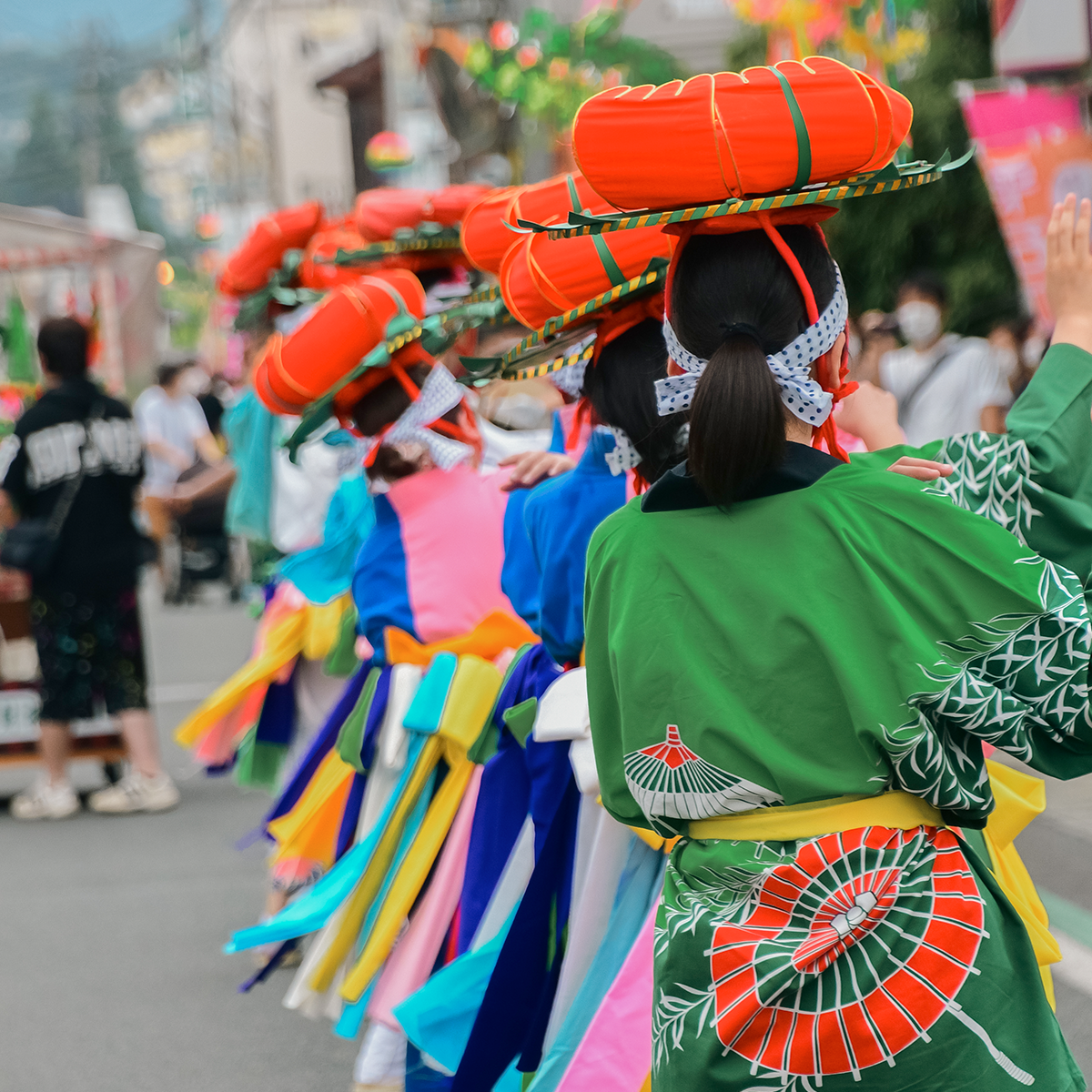
Japanese
真夏の祭典・雫石よしゃれ祭!!!みなさんは夏の風物詩といえば何を思いつくでしょうか?
海水浴?花火大会?バーベキュー? どれも心躍るものばかりですが、夏祭りを忘れてはいけません!
これまで、「THE KITAKAMI TIMES」では盛岡市の「さんさ踊り」について取り上げてきましたが、実は盛岡市のお隣の雫石町には長い歴史と伝統を持つ「雫石よしゃれ祭」という夏祭りがあります。
今回はその「雫石よしゃれ祭」について掘り下げていきたいと思います。
まずはお祭りの舞台である雫石町についてご紹介します。
雫石町は、岩手の県都である盛岡市の西方約16kmに位置しています。その広がりはおよそ東西24km、南北40kmで総面積608.82㎢と広大であり、岩手山や駒ケ岳などの美しい峰々に囲まれています。また、泉質も効能も異なる温泉が9か所あり、小岩井農場やスキー場などの観光施設も充実しており、四季を通じて自然の中で遊ぶことができます。
このような雄大で美しい自然に囲まれた雫石町には、まちの中心部に、雫石よしゃれ通り商店街と呼ばれる古くから町の商業を担ってきたエリアがあります。そこでは、夏になると「雫石よしゃれ祭」が開催され、エネルギッシュな踊りと華やかなパレードに毎年多くのお客さんが魅了されます。
それでは、「雫石よしゃれ祭」についてご紹介しましょう。
今年で53回目を数える「雫石よしゃれ祭」は、雫石の夏の一大イベント、雫石が熱く燃える1日です。
当日はよしゃれ通り商店街をメイン会場に、みこし運行の他、様々な団体による南部よしゃれやさんさ踊りのパレードが行われるほか、町役場隣のアルペン記念公園ではYOSAKOIの演舞も行われます。
そして、祭りを締めくくるのは、よしゃれ通りのあちこちに広がるさんさ輪踊りの輪。一緒に踊ってみたくなったあなた、もちろん飛び入り大歓迎です。
よしゃれ祭は、1969年に雫石小学校のグラウンドで開催された「第24回長崎国体山岳部門」の第1次県予選会入山式にて、雫石よしゃれで選手を歓迎したことがきっかけとなりました。その2年後の1971年には、初めて「雫石よしゃれ祭」が開催され、第17回(1987年)には延べ1万人もの人で賑わうようになり、回を重ねるごとに規模を大きくし、雫石の夏の風物詩となりました。
2020年、2021年は新型コロナウイルス感染症の流行による影響で、感染拡大防止のために開催中止を余儀なくされましたが、その中でも祭りに対する思いは途切れることはなく、2022年には、規模を縮小し3年ぶりに「雫石よしゃれ祭」が開催されました。よしゃれ踊りやYOSAKOI、さんさ踊りの団体など、総勢約500人がパレードを披露し、会場には約4,500人ものお客さんが集まり、会場一帯が色とりどりの衣装に身を包んだ出演者らの踊りに酔いしれ、熱気に包まれました。町民の方からは「開催されてよかった」といった歓びのほか、「輪踊りが早く再開できるといい」といった次回開催への期待の声があがりました。
ここでよしゃれ祭の演目の1つ「南部よしゃれ」について紹介します。
上の写真のように、踊り手たちが身に着けるのは、紺絣にもんぺ、手甲、編笠の『あねっこ(方言で年頃の女性の意味)衣装』、そしてその踊りは優雅な手踊りです。緩やかな動きの中にも、「南部よしゃれ」の来歴に係る女性の心意気を感じさせます。
元々は座敷踊りとして婚礼などのお祝いの席で踊られる格式を持った芸能でしたが、1970年に行われた岩手国体を期に、集団で踊る親しみやすい踊り方が加わりました。
ところで「南部よしゃれ」の由来とは何でしょうか?
その謎を紐解くには「南部よしゃれ」の元唄である「雫石よしゃれ」の発祥について、400年以上もの歴史を遡る必要があります。
その昔、雫石城主の斯波(しば)氏は、地下水路を使って用水を引き、これを隠すため茶屋を設け監視役の女将を常駐させました。そのため、城の攻略を図る南部氏は、隠密を使って水路を探らせましたが、なかなか見つけ出すことができませんでした。そこで隠密は女将から情報を聞き出そうと、女将がかけているたすきを誉めましたが、不審に思った女将はこれを見破り、相手にしませんでした。
このことが「雫石よしゃれ」の起こりと言われています。そして、江戸時代末期から明治にかけて、正装で踊る格調高い踊りが成立したとされ、町内全域に伝わり、長い伝承の中で地域性が生まれ、「南部よしゃれ」が派生し、各地に広がり、今日に至ります。
このように「雫石よしゃれ祭」だけでなく、その演目自体にも長い歴史と伝統があり、町を代表とする民俗芸能としての一面を持っていることがわかります。
これまで紹介してきた「雫石よしゃれ祭」ですが、今年は8月11日(金・祝)に開催されます。昨年は参加団体数を限定し、よしゃれ通りでのパレードのみの開催でしたが、今年は4年振りに通常開催する予定です。雫石よしゃれ通り商店街と世界アルペン記念公園特設ステージ、中央公民館野菊ホールの3会場で、よしゃれやさんさ踊りのパレード、みこし運行、YOSAKOI演舞、昨年度南部よしゃれ全国大会最優秀賞受賞者による唄と踊りなどが行われます。
雫石がアツく燃える「雫石よしゃれ祭」、ぜひお越しください!!!
